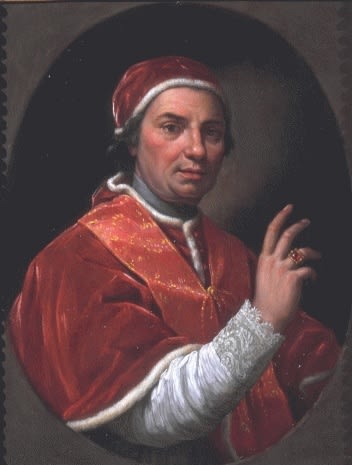
Giovanni Domenico Porta
To view all current artworks for sale visit philipmould.com
Giandomenico Porta's oeuvre represents his career as a portraitist to the Papal court and to the Roman aristocracy. This portrait -a version of which was engraved for distribution in France- shows the qualities of character, modelling and flamboyance which recommended him to such sitters as Cardinal Simonetti and Pope Pius VI.
Pope Clement XIV, born Lorenzo Ganganelli, was a surprising and compromise candidate to emerge successfully from the Conclave that followed Clement XIII's death in 1769. He won only by one vote, which was his own exercised on his behalf by Cardinal Rezzonico. He was destined, however, by virtue of the political and ecclesiastical circumstances that he inherited, to perform one of the most important actions of eighteenth-century Catholic history, the Suppression of the Jesuit Order in 1773. This action came as the culmination of years of pressure brought upon the Papacy by the secular powers of Europe and their allies in the Holy College. Spain and France particularly resented the wealth and influence of the Jesuits as an impediment to their own domestic and colonial ambitions, whilst some members of their governments found the Order an offence to their own rationalist philosophy. The Pope's command was affected throughout Europe with varying degrees of rigour, particularly in Spain, where the King regretted that the instruction merely disestablished the Jesuits and confiscated their property without containing a rounding condemnation of their many (presumed) moral failings and blasphemies. Ironically, the Jesuits found harbour in Protestant Prussia and at the Court of Maria Theresa of Austria, where their institutions remained unmolested until the Order's restoration in 1804.
When the Pope died in 1774 of natural causes, rumours spread of his death by the hands of his victims. An inscription in an old hand on a posthumous engraving of the Pope reflects the general belief: ''et mourut empoisonne par les Jesuites.''
Be the first to hear about our available artworks
* denotes required fields
We will process the personal data you have supplied in accordance with our privacy policy (available on request). You can unsubscribe or change your preferences at any time by clicking the link in our emails.